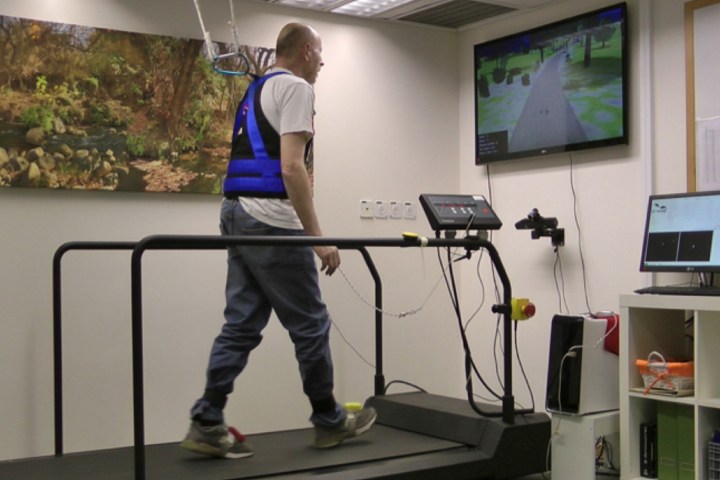
What researchers there have been investigating is how incorporating a virtual reality obstacle course into a regular treadmill workout may be able to assist vulnerable older people in better preventing tumbles.
“Falls are a leading cause of morbidity and mortality in older adults,” the study’s lead author, Anat Mirelman, told Digital Trends. “The prevalence of falls is huge, with one out of every three adults aged 65 years or older [falling] at least once per year, with approximately half of these fallers suffering multiple falls in this period. These statistics are even higher in neurodegenerative conditions such as in Parkinson’s disease, and in people with cognitive impairments.”
The idea of adding a video game-style virtual reality element is that it can be used to safely train both the motor aspects that are important to fall risk, while also teaching participants to improve the cognitive functions necessary for safe ambulation (read: movement). By design, the VR is not fully immersive, so as to allow the subject to be aware of their real world surroundings — but it’s certainly proving to be effective.
In the study of 203 older adults with a history of multiple falls, those who participated in the training saw a reduction of 42 percent in falls six months post intervention.
“It also has the advantage of being a game that encourages participation and compliance,” Mirelman continued. “In the virtual environment, we can match the obstacle negotiation and cognitive challenges to their abilities, give feedback about performance to enhance the learning of new motor strategies of movement, and simultaneously address motor and cognitive aspects of fall risk that are crucial to safe ambulation. These advantages also often result in longer duration of training and adherence compared to over ground training.”
In terms of next steps, Mirelman said she believes the study has important implications for clinical practice.
“Adherence and participation were very high, there were no serious adverse events, and participants reported high satisfaction and enjoyment,” she said. “We think the next step is to show effectiveness, and not just efficacy, in a less confined research environment. The study showed that this type of training is effective and we think it can be administered in community gyms and rehabilitation clinics. We are working on these possibilities for the near future.”


